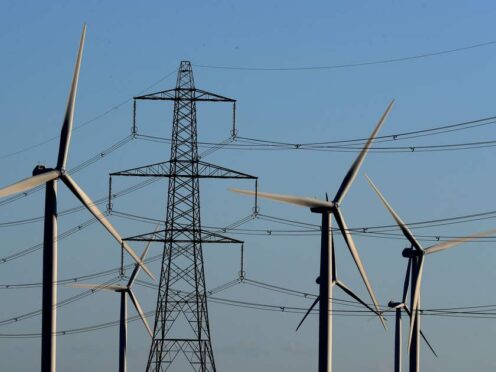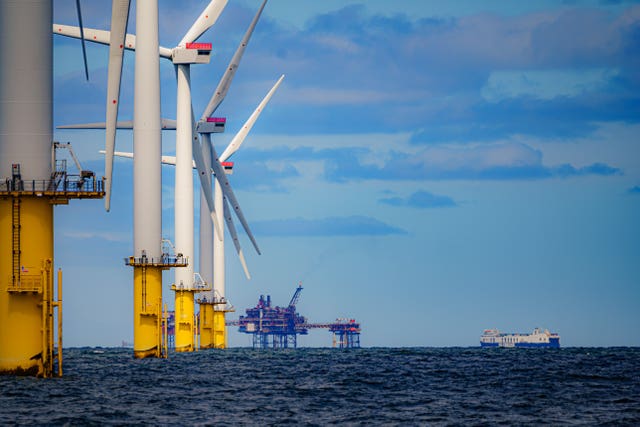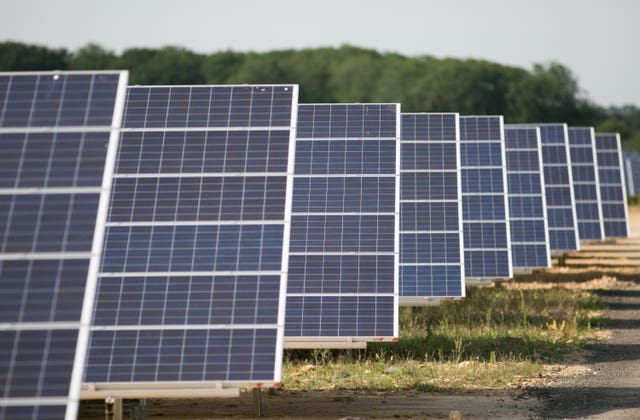
An additional £58 billion will need to be invested in Great Britain’s electricity grid in the first half of the next decade to ensure that it can supply the power to keep homes and businesses going, a new report has found.
The Electricity System Operator (ESO) said on Tuesday that around 20,000 jobs could be created in the largest build-out for seven decades. Nine in 10 of these jobs will be outside London and the South East.
“Great Britain is about to embark upon the biggest change to the electricity network since the high voltage transmission grid was established back in the 1950s,” the report said.
It called for “swift and coordinated” progress, without which the country’s climate ambitions might be at risk.

The ESO is the organisation which runs the network. It is currently owned by National Grid, but will transfer into Government ownership later this year.
New connections and more capacity will be needed as people and companies switch to using electricity for their cars or heating their homes.
This will require new capacity in the grid. But the new forms of generating energy – primarily through wind and solar farms – will also change the way the grid is shaped.
Once a vast majority of Britain’s electricity came from massive coal-fired power plants built close to coal mines.
The power grid then moved this power into Britain’s cities and industrial areas.
The grid of the future will instead source its electricity from locations spread out across the country.
This is by design. Sometimes it is windy on the east coast, but not the west, so having turbines in both places can keep supplies more constant.
But this means that the grid will have to reach places where it has previously only had small capacity, not least offshore.
There will have to be 86 gigawatts (GW) of offshore wind in Britain’s waters alone, the report said, up from 14 GW today. Today there is only 63 GW of offshore wind in the world.
That will help to satiate a jump in demand for electricity. Britain’s needs are expected to rise by 64% by 2035, and to double by 2050, the ESO’s report said.
“Investment in renewable energy generation has exceeded investment in transmission capacity over the past decade, resulting in bottlenecks on the electricity network,” the report said.
This means that “energy is being wasted as the grid cannot transport it to where it can be used”.
For instance, if wind turbines in Scotland are producing more electricity than Scotland can use or export to England and elsewhere, then the grid has to pay wind farms to switch off some of their turbines.
This practice, known as curtailment in industry jargon, cost the grid £569.7 million last year, according to the UK Wind Curtailment Monitor.
But like the construction of new wind and solar farms, train lines, housing and much else, the expansion of new grid infrastructure can often run into opposition from local groups.
In its response to the report, the Department for Energy Security and Net Zero appeared to nod to such opposition.
“These are preliminary plans published by the Electricity System Operator,” it said.
“Any projects taken forward would be required to progress through a robust planning process.”
One way to avoid local opposition from people who are worried about spoilt views is to bury the cables.

But that comes with trade-offs. Underground cables cost around five times as much as overhead cables, are harder to maintain and are more disruptive during construction.
Meanwhile, offshore cables, another solution which does not spoil views, can be up to eight times more expensive over short distances and can disrupt sensitive marine ecosystems.
The Government has recently suggested that communities impacted by new grid infrastructure should be given “substantial” financial incentives to win local support.
There are also other ways of managing the country’s future energy needs which can reduce the requirement for massive expansion.
That can include locating big users of power, such as factories, close to where power is being generated, reducing the need for new long cables.
There will also be a role for what in industry jargon is called demand flexibility. This means that by managing not how much electricity people and businesses use, but when they use it, it can take the strain off the grid during peak periods, reducing the need for expansive expansion of the grid.
If this demand flexibility is introduced in certain areas it could save consumers £5 billion, the ESO said.

Enjoy the convenience of having The Sunday Post delivered as a digital ePaper straight to your smartphone, tablet or computer.
Subscribe for only £5.49 a month and enjoy all the benefits of the printed paper as a digital replica.
Subscribe